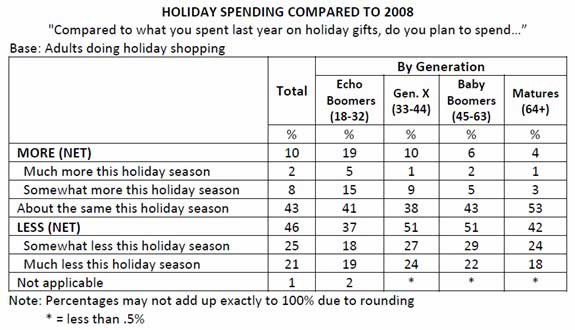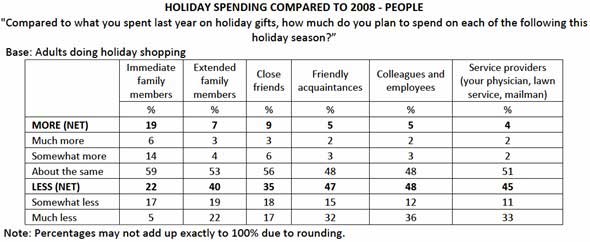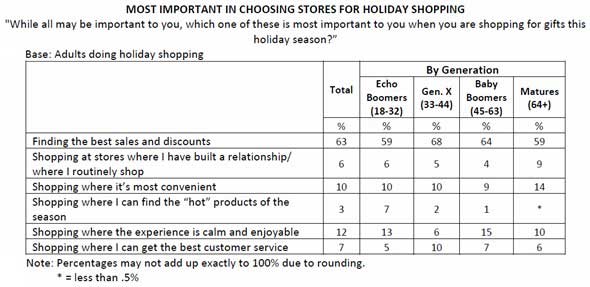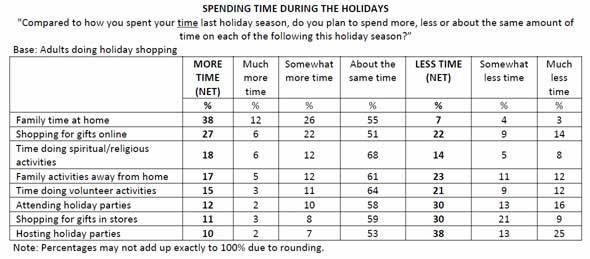This holiday season, almost half of holiday shoppers (46%) plan to spend less on holiday gifts compared with last year, according to a recent Harris poll. Young consumers are an exception: Just 37% of Echo Boomers (age 18-32) plan to spend less.
Moreover, 19% of Echo Boomers plan to spend more this season, compared with only 6% of Baby Boomers (age 45-63) and 4% of Matures (age 62 and older). Younger holiday shoppers are also the only age group that plans to increase spending in higher-end stores.

Spending More on Family Gifts
Despite the expected decrease in overall holiday spending, 19% of shoppers say they will increase spending this year on immediate family members. Meanwhile, 48% plan to spend less on employees and colleagues this year and 47% plan to spend less on acquaintances.

Searching for Sales and Discounts
Almost two-thirds (63%) of shoppers cite sales and discounts as the most important aspect of holiday shopping, and many will turn to online shopping to find the best deals. Some 27% say they will spend more time shopping online, compared with 11% who plan to spend more time shopping in a store.

Nearly half (49%) of holiday shoppers plan to spend less at specialty stores and 26% plan to spend more at discount stores. Only 5% of shoppers plan to spend more at top-tier department stores.
Spending Time With Family
Americans also plan to return to a more traditional sense of Christmas by focusing on family and close friends. Nearly two in five holiday shoppers (38%) plan to spend more family time at home this year than last year and 17% are planning more time away from home but doing activities with their family, Harris found.
Compared with last year, shoppers are approaching the holidays with shifted priorities, many in the way they spend their time, according to the poll:
- 38% plan to spend less time hosting and attending holiday parties.
- 18% plan to devote more time attending religious events.
- 15% plan to devote more time volunteering.

About the data: This Harris Poll was conducted online within the United States on November 2 and 11, 2009, among 2,303 adults (age 18 and over).



